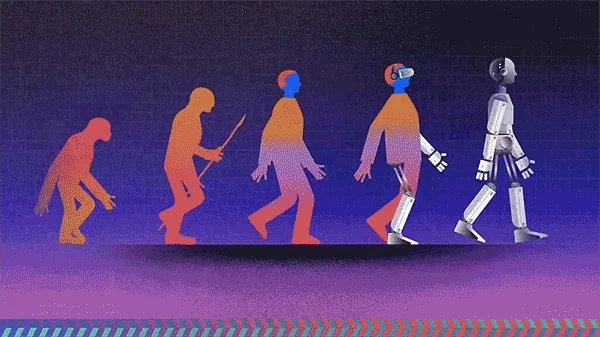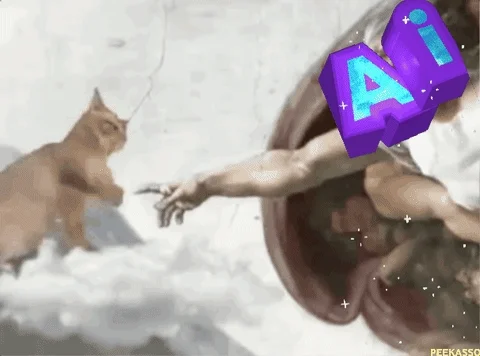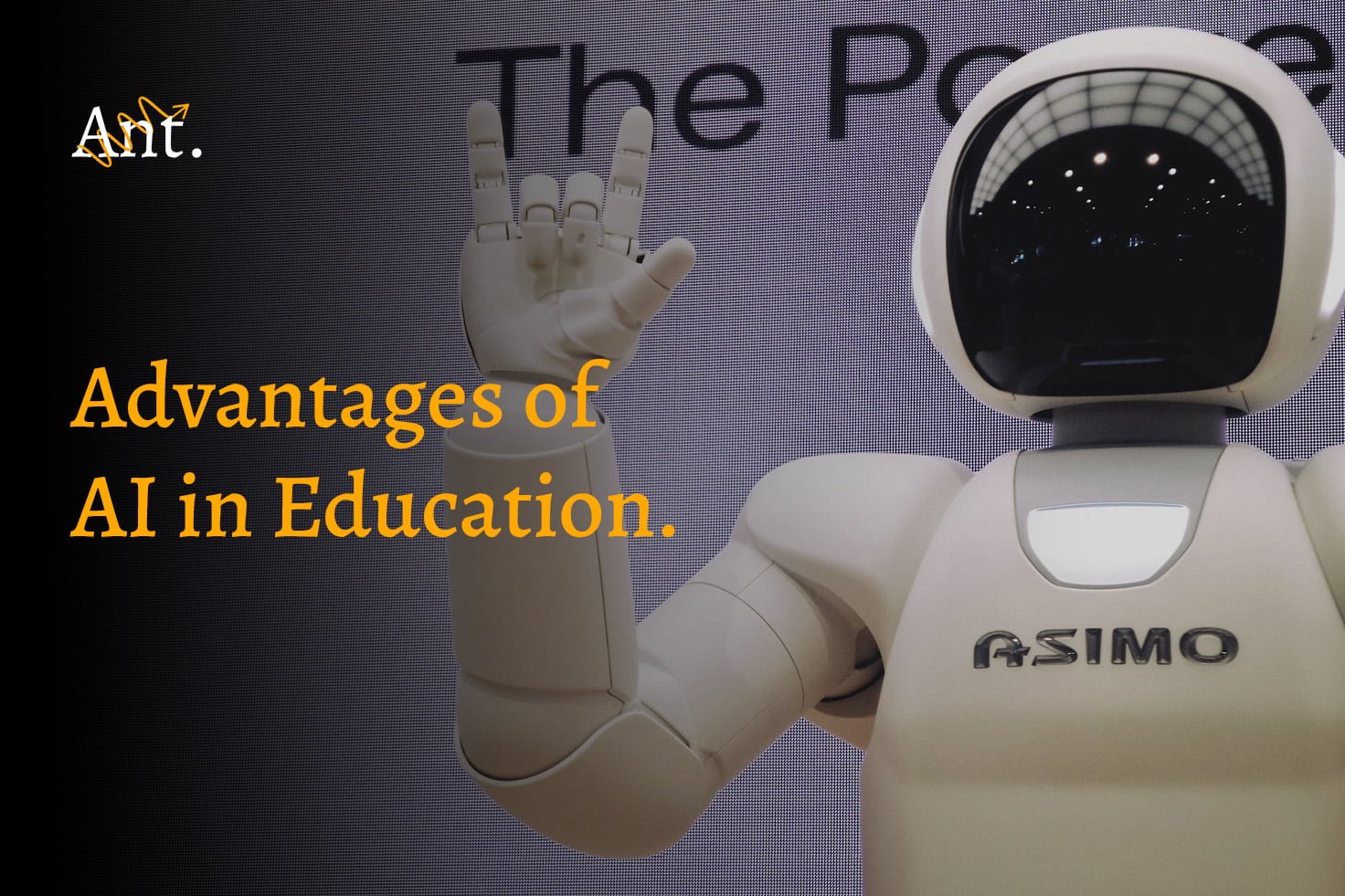Artificial Intelligence is being used in multiple industries, from self-driving cars to medical diagnosis. But when it comes to education, AI offers unique advantages to us.
Unlike in other sectors, AI in education isn’t meant to replace teachers, but rather to empower them and personalize the learning experience to students.
Let’s dive into the major advantages of AI in education or how AI is changing the education system.
Major Advantages of AI in Education
The Biggest advantage of AI is that AI has created a lot of jobs for us, By 2025, it’s predicted that there will be a job demand of 97 million people in AI-related industries.
If you’re a student reading it, nothing! that was my task to bring this to you.

AI has created a lot of new jobs for students only this year. There are many different kinds of jobs in AI that need different skills.
Students can do side hustles using AI tools to make side income along with the study like Joe Popelas a 20 years old boy who has made 1 million dollars by selling eBooks created with the help of ChatGPT & you can do that as well. If you’re interested in it, I’ve already discussed it in the AI in Education article in detail.
1. AI is helping teachers
According to Bernard Marr, AI has multiple advantages in education. Ai is not a threat to teachers and is not there to replace teachers but is here to deliver a better education to our children by making the whole learning experience better. AI can help teachers create presentations, quizzes, and other learning materials automatically. Some AI-powered content creation tools for teachers include Quill (formerly Equatio), Nearpod, and Pear Deck.
2. Individualized learning
AI can personalize the learning experience by tracking student’s progress and identifying areas where they need more help. On the other hand, the one teacher in the classroom can’t do that to individual students one by one but AI has fixed this big problem. Some popular student assessment tools that use AI include iReady, DIBELS, and Measure of Academic Progress (MAP).
3. Immediate responses & availability
As AI is a robot or digital thing it can be available 24/7 for students like a smartphone. When students need any help they can ask these AI-powered devices to help them with MCQs, History Explanations, Basis Questions, and Answers, Revision, Topic Learning & more.
4. Engaging and accessible learning
In our traditional school or college learning system, we learn kinda boring way but now Artificial Intelligence has changed this traditional ways by making learning more engaging with the help of AR/VR integration in schools like if teachers have to explain any historical events. schools can use VR devices to explain complex concepts. I wish this technology had existed when we were in the school.
5. Low cost – compared to traditional learning
AI-powered learning platforms can be accessed online, which cuts these costs. We just need these AI-powered devices of software subscriptions to teach students with the help of this technology so that this cuts a log of our cost compared to traditional learning systems.
The Future of Learning with AI
AI is an emerging technology that can be used to create a more custom-fit experience for students. AI can also be used to address the growing digital skills gap and prepare students for future jobs by teaching critical thinking, problem-solving, and creativity skills.

The future of AI is bright because AI is having a positive impact on education by making it more effective and efficient.
1. Education 4.0
Education 4.0 is a new wave in the education sector which is the fourth industrial revolution. I can make the education system faster, simpler, and smarter by using the latest AI technologies like robots, etc.
In Education 4.0, AI helps by doing the boring stuff that takes up a lot of time, like checking tests or sorting out schedules.
So, Education 4.0 uses AI to give students better and more engaging learning experiences and helps teachers to be more focused on their jobs.
These tools allow students to learn in a more interactive and engaging way with AR/VR technologies.
2. Future of education according to Sal Khan
Sal Khan argues that AI has the potential to be a powerful tool to improve education in the future, not destroy it, by giving every student a personalized tutor and every teacher a teaching assistant.
AI can be used to support learners in different ways with multimodal intelligent tools and environments. Teachers can also gain from the use of AI-based interactive and dialogical tools. The future scenarios will involve learners and machines working together. However, AI should be integrated with pedagogy and the needs of human learning.
Recent Technological Developments of AI in Education
Recent technological developments in AI for education are quite fascinating. Here are some highlights:
- UNESCO has been actively involved in addressing the challenges of integrating AI into education. They emphasize a human-centered approach to AI, aiming to enhance human capacities and protect human rights for effective human-machine collaboration in life, learning, and work.
- The World Economic Forum released a report titled “Shaping the Future of Learning: The Role of AI in Education 4.0,” which discusses how AI could transform education by enhancing personalization, boosting digital skills, and empowering teachers with advanced capacity-improving tools.
- Research indicates that AI technologies can bridge the gap between technological innovations and educational applications, providing practical examples and inspiration for both tech experts and educators.
- Advances in technology are also reinventing K-12 education, with the introduction of AI chatbots like ChatGPT and the growing accessibility of virtual-reality tools that expand the boundaries of the classroom.
Top AI Technologies Making Education More Simpler Than Ever
AI technologies are changing education by making it more accessible and personalized than ever before. Here are some of the top AI tools and technologies that are simplifying our education system:
- Adaptive Learning Platforms: These systems adjust the learning content in real-time, based on the student’s performance. They provide personalized pathways for students to learn in their own style.
- Automated Grading Systems: These tools can quickly grade assignments and exams, giving teachers more time to focus on teaching and less on administrative tasks.
- Augmented Reality and Virtual Reality: AR and VR offer an engaging experience of learning, helping students understand complex subjects by visualizing them in a 3D space.
- Natural Language Processing: NLP is used for language learning apps like Duolingo, which makes students practice and receive feedback on their pronunciation and grammar.
- Intelligent Tutoring Systems: These AI tutors provide one-on-one assistance to students, helping them with homework and explaining difficult concepts just like a human tutor would.
- AI in Gamification: Learning through games keeps students engaged and makes education fun. AI can personalize these games to adapt to the learning level of each student.
Sal Khan’s tool, Khanmigo, is a great example of an AI-powered educational tool. It acts as a personal tutor, helping students with various subjects and providing instant feedback. Teachers can also use it to generate lesson plans and track student progress.
AI Tools for Students Making Learning More Engaging
The several AI-powered tools and platforms that can be leveraged in digital education:
- AI Writing Assistants: Tools like HyperWrite AI, Grammarly, and Quillbot use AI and machine learning to assist with the writing process, improve grammar, style, and tone, and help overcome writer’s block.
- Research and Academic Tools: Platforms such as Scite.ai, Research Rabbit, PaperPal, SciSpace, and Scholarcy utilize AI to enhance research efficiency, facilitate collaboration, manage citations, and ensure the originality of academic work.
- Transcription and Language Learning: AI-powered tools like Otter.ai and Knowji offer speech-to-text transcription and vocabulary learning solutions, leveraging advanced audio-visual techniques.
- AI Assistants and Chatbots: Emerging AI assistants and chatbots, such as those developed by OpenAI, can be employed to support various educational tasks, from answering queries to providing personalized learning experiences.
AI Tools Students Can Use to Speed up Educational Tasks
As a busy college student juggling multiple classes and a part-time job, I often struggle to keep up with fast-paced lectures. Taking detailed notes while actively listening to the professor proves difficult. This often leads me to miss key points, or I find my notes messy and hard to decipher later. This frustration impacts my understanding of the material and makes studying inefficient.

Otter.ai completely changed my way of learning. By freeing me from taking notes, it allowed me to focus on the professor’s lecture. The ability to review complete transcripts at my own pace and collaborate with peers significantly improved my learning outcomes and made studying less time-consuming and more effective.
Following is the list of tools I frequently use to speed up learning, notes taking, easy writing, or more:-
- Grammarly (writing assistant)
- Otter.ai (lecture transcription)
- ClickUp (project management)
- Mendeley (research management)
- Duolingo (language learning)
If you want to learn more about AI tools for education you can read this article: Best AI tools for students.
Conclusion
Many countries like the USA and China have started using AI education. AI is an amazing tool and has a hell lot of advantages of using it. If you’re a student and your school or college not utilizing Artificial Intelligence don’t worry you can use it individually in making presentations, assignments, notetaking, etc.




